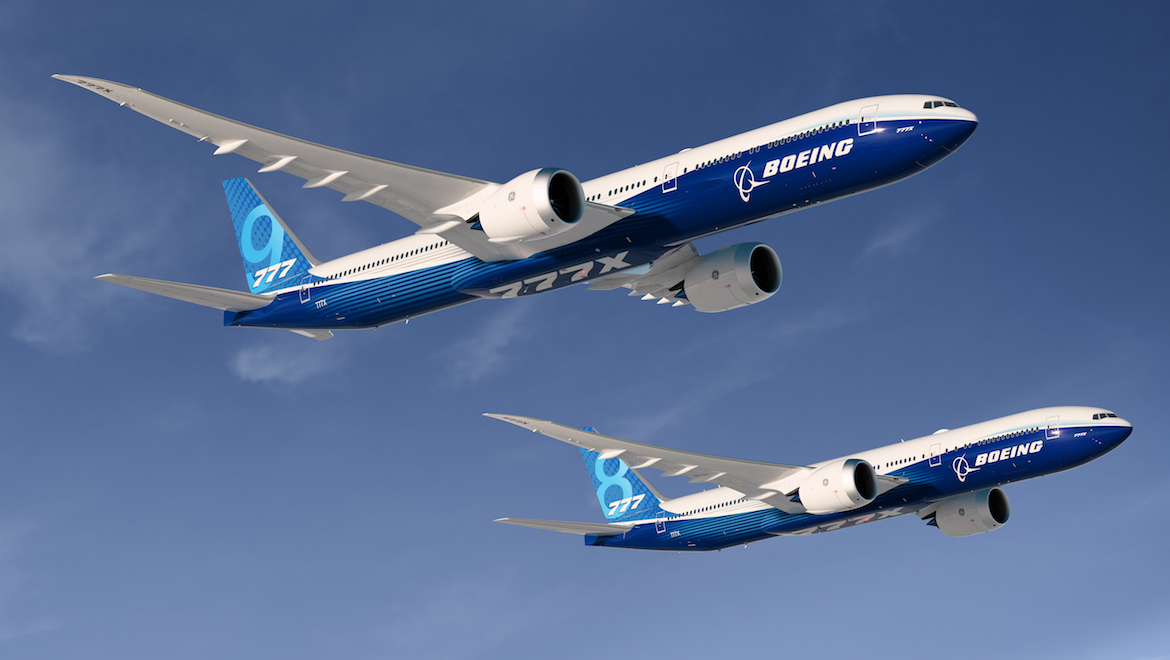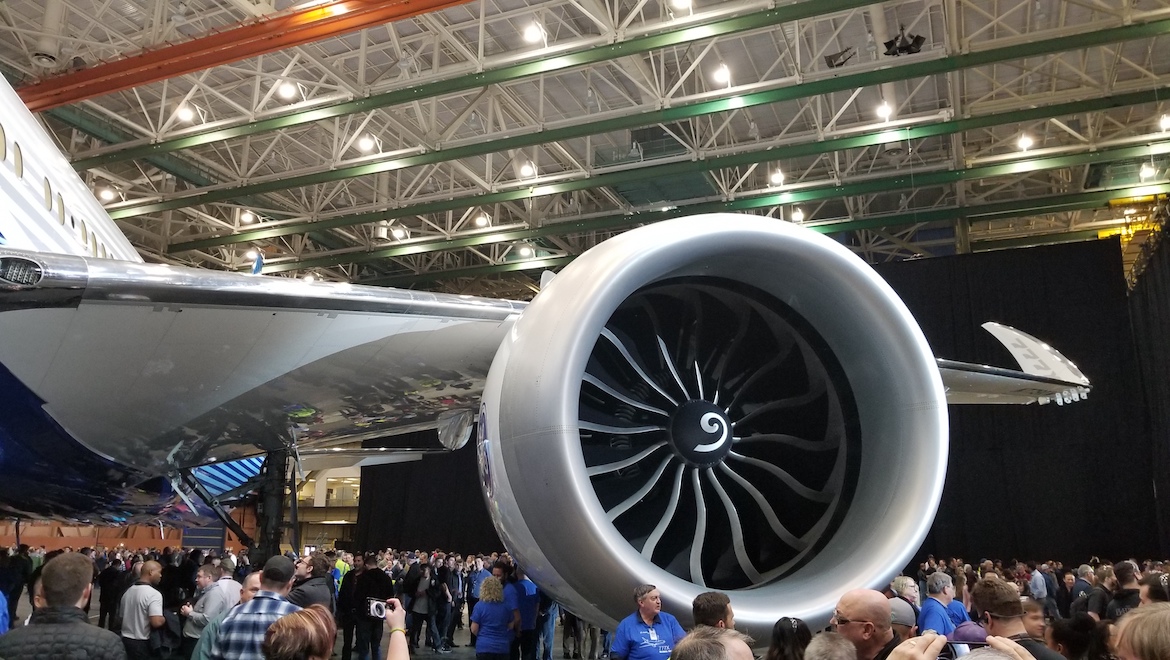
Boeing says the recent incident when a cargo door separated from the fuselage on a 777-9X during a high-pressure test was not expected to impact the aircraft program’s certification schedule.
The 777-9X static test aircraft was undergoing final load testing in the presence of representatives from the United States Federal Aviation Administration (FAA) on September 5 (US time) at Boeing’s Everett facility just outside Seattle when the cargo door broke away from the fuselage.
Boeing has confirmed an incident occurred that required the tests – which involve bending the wings of the aircraft up to a level beyond what would ever be experienced in commercial service – to be suspended, without offering specifics.
The company said in a statement on Tuesday (US time) the testing issue “occurred during the final minutes of the test, at approximately 99 per cent of final test loads, and involved a depressurisation of the aft fuselage”.
Further, it said the test team followed all safety protocols and would be conducting a “comprehensive root-cause assessment over the coming weeks”.
“The static airplane has been successfully undergoing testing since June, and this was the final test for the static test article,” Boeing said.
“While our root cause assessment continues, at this time we do not expect that this will have a significant impact on aircraft design or on our overall test program schedule.
“We remain fully focused on safety as our highest priority, as we subject the 777X to a rigorous test program prior to first flight.”
The static test aircraft emerged from Boeing’s final assembly line in September 2018. It will never fly. Instead, it was being used to test the structural limits of the airframe.
There were also two 777-9X flight test aircraft being put through preflight tests.
https://www.facebook.com/Boeing/videos/450911565455572/
VIDEO: A look at the Boeing 777-9X’s first taxi test from the manufacturer’s Facebook page.
Boeing has targeted early calendar 2020 for the first flight of the 777-9X, with certification and delivery to airline customers follow later that year.
In July, the airframer announced it had delayed first flight from from mid-2019 to early 2020 due to issues with the aircraft’s GE Aviation GE9X engines that will power the 777-X family of aircraft.
“Based on GE’s latest assessment on what it will take to address these challenges, we are currently projecting that first flight will occur in early 2020 rather than in 2019 as we have previously mentioned,” Boeing chief executive Dennis Muilenburg said during the company’s Boeing’s second quarter results presentation in July.
Then, in August, Boeing said it had pushed back the timeline for the entry-into-service of the second member of the 777-X family of aircraft, the 777-8X, to “reduce risk” in the program.
The decision to delay first delivery of the 777-8X followed a review of the “development program schedule and the needs of our current 777X customers”, Boeing said on August 15.
Previously, the 777-8X had been expected to enter service in 2022. Boeing has not disclosed a new timetable for the ultra-long range widebody, which was one of the aircraft under consideration by Qantas to mount nonstop flights from Australia’s east coast to London and New York, alongside the Airbus A350 platform.
Qantas has said previously it planned to decide whether to place an aircraft order by the end of calendar 2019, with delivery in 2022 and flights taking off in 2023.

THE 777-X IS A TWO-AIRCRAFT FAMILY
Launched in 2013, the 777-X family of aircraft comprise the 777-8X and 777-9X variants. The pair is an upgrade from Boeing’s in-production 777-200LR and and 777-300ER.
In addition to the new GE Aviation GE9X engines, features of the 777-X family included composite wings with folding wingtips to maintain its Code E rating at airports, as well as in-cabin enhancements such as larger overhead stowage and a wider cross section.

The 777-9X is 77 metres in length and has a total wingspan of 72 metres with its wingtips extended. It is capable of flying 7,285nm when carrying 426 passengers in a two-class configuration, according to Boeing figures.
It has been pitched as the ideal replacement for the very large aircraft segment of the market, especially in light of Airbus’s decision to cancel the A380 program.
Meanwhile, the 777-8X is still in development. The Boeing website lists the aircraft as having a range of 8,690nm and a passenger capacity of 384 passengers in a two-class layout. In addition to being a candidate for Qantas’s Project Sunrise, the 777-8X is also a potential replacement for the in-service Boeing 777-300ER.
The 777-X program had received 344 orders at August 31 2019, according to the Boeing website.
















Craigy
says:An article on the Flightglobal website suggested that Boeing has put forward the B779 as an interim solution with additional fuel tanks and a reduced seat count until the B778 is available. Apparently the source was well placed. No doubt the price per aircraft would be heavily discounted.
Al
says:@craigy this is not inconceivable.
Air New Zealand have been working with Boeing on increasing the 787-9s maximum takeoff weight by around 10% or 2.5 tones. When announcing their new order recently, they indicated that a higher MTOW variant should be available by 2022 and improve the feasibility of New York-Auckland and Sao Paulo-Auckland.
Ben
says:1%
Dwight Looi
says:Running updating the 787-8 to a 787-8LR as a shortened 787-9 with an identical wing, fuselage and active tail as the -9 with a few frames removed and an identical MTOW as the -9 will make a 8,800nm airliner. Problem solved. These ultra long hull routes are not super dense anyway. SIA flew the SIN-LAX and SIN-EWR route at 50~60% load factor with the 340-500 when they did it. Smaller is better. Less seats to fill less risk of losing money.
Andrew Boydston
says:Boeing will take a second test article and complete its test to 100% within months. Too much money has been spent already by Boeing.